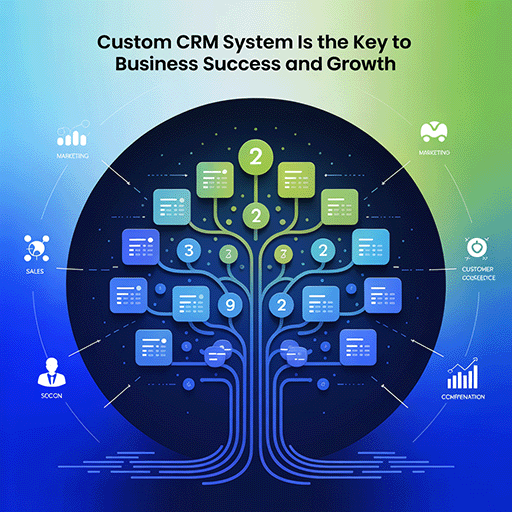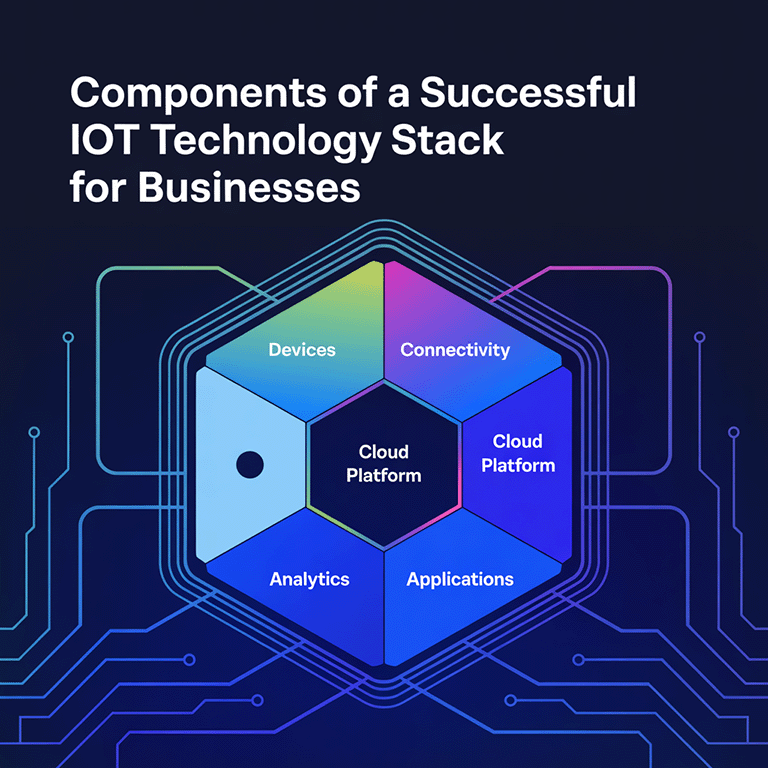Working in tech means always keeping your ear to the ground, as every year, something new emerges that can turn the whole industry upside down. Take, for example, the arrival of AI technologies — they dominated the year 2024, and each company tried to implement them in their work.
The same dynamic happens with programming languages: their relevance constantly changes, and the newest displaces the oldest. In 2023, the list of the best languages looked very different from 2025. If you’re wondering which language to focus on next, this article reveals the top programming languages for 2025. Let’s dive right in!
What are Programming Languages?
Programming languages are a means of communication between developers and computers. In simple words, they are like languages people use to communicate with each other. Programming languages have their syntax and vocabulary, which enables developers to give precise instructions to computers and, therefore, create websites, applications, or games.

Main Types of Programming Languages
Based on the level of abstraction, programming languages fall into two categories: high-level and low-level.
Most popular languages, like Java and Python, are considered high-level because they are user-friendly. Their syntax resembles human language, making it easier for programmers to understand. Debugging is also a simple process. High-level programming languages are easily portable and do not depend on any specific platform.
On the contrary, low-level programming languages are computer-friendly. Some even call them the native languages of computers. They are complex in everything: understanding of it, debugging, and maintenance. They are also heavily dependent on the platforms.
Programmers used low-level languages to develop operating systems, device drivers, databases, and applications requiring direct hardware access. Fortran, Rust, Ada, and C/C++ belong to this category.
Besides the abstraction level, there are also five types based on features. This distinction is flexible: some languages can belong to several types simultaneously. Here is the comprehensive outline of them:
- Procedural programming languages are among the oldest and most common programming languages. They are based on the concept of calling procedures, which are sequences of instructions given to the computer. C and C++, Pascal, Java, and BASIC are classic examples of procedural programming languages.
-
Functional programming languages operate on mathematical functions and evaluations. Each function takes an argument and returns the output. Among functional programming languages are Elixir, Scala, Haskel, and Erlang.
- Object-oriented programming languages (OOP) focus on classes and objects rather than logical calculations. The process involves breaking down a software program into reusable, modular code structures called classes, which then can be used to create individual instances of objects. OPP languages are suitable for software development, design programs, and mobile applications. The most common examples of OPP are Java, Python, C++, and Ruby.
- Scripting programming languages differ from other programming languages as they are not used to create a program but rather to automate tasks within the program. They are much easier to use and require less code than other programming languages. PHP, Ruby, Python, and Node.js are classic cases of scripting programming languages.
- Logic programming languages dictate what computers need to do instead of how they should do it. They present a set of rules and facts to guide the computer in making decisions; hence, they are handy for AI applications. Prolog, Abscess, and Datalog are classic examples of logic programming languages.
How Many Programming Languages Are There?
The actual number is a mystery as there are many short-lived programming languages, some unknown to the public, but there is an assumption that there are 300 to 700 programming languages in the world.

What are the Most Popular Programming Languages?
JavaScript
Overview: JavaScript is an open-source programming language that emerged in 1995 and gained immense popularity. In 2023, the specialists named it the most-used programming language, as 63% of developers chose to work with Javascript.
Pros:
- Constant upgrades contribute to optimized performance.
- Many libraries and frameworks exist, such as React, Angular, and Vue.js.
- Interoperability enables the program development from multiple pieces of code written by different teams.
Cons:
- The risk of third parties modifying code online.
- Search engines have trouble detecting the applications created by Javascript.
- The code can behave differently across various browsers.
Good for: front-end web development, games, mobile applications, and server applications.
Famous apps/software built on this language: Facebook, Netflix, Uber, LinkedIn, and the popular game Candy Crush.
Python
Overview: Python is an open-source programming language that was introduced in 1991. In 2023, Python was the third most used language, with 49% of developers admitting to implementing it. The chances are Python will soon dominate the market.
Pros:
- It is beginner-friendly as it is easy to learn and understand.
- There is a large community of supporters and a vast knowledge base.
- It is suitable for data science and machine learning.
Cons:
- The performance speed is slower.
- Less security leads to hacker attacks.
- Higher memory usage and frequent garbage collection slow down the processes.
Good for: web development, data analysis, machine learning, DevOps, and software-prototyping.
Famous apps/software built on this language: Instagram, Pinterest, Disqus, Spotify, Dropbox, Uber.
PHP
Overview: PHP, or PHP: Hypertext Preprocessor, is an open-source scripting language created in 1995, mainly used for website development.
Pros:
- It is compatible with various platforms and systems.
- It is flexible enough to be combined with other programming languages in one system.
- Extensive collection of libraries.
Cons:
- It is less effective and slower to work with.
- Debugging is much more complex than with other scripting languages.
- It is vulnerable to security breaches.
Good for: websites, applications, and customer relationship management systems.
Famous apps/software built on this language: Facebook, Wikipedia, MailChimp, Slack, Moodle, WordPress.
React
Overview: React JS is a popular JavaScript library developed in 2013 and mainly used to create interactive user interfaces (UIs).
Pros:
- The possibility of creating reusable components.
- The Redux feature updates components without them being dependent on each other.
- The virtual Document Object Model (DOM) feature enhances speed and performance.
Cons:
- It is heavily dependent on JavaScript. So, it might be challenging for developers unfamiliar with it.
- It has difficulty running on older devices or ones with weak networks.
- Limited framework as it deals with the “View” part of the MVC (Model View Controller).
Good for: web and mobile app development.
Famous apps/software built on this language: Facebook, Instagram, Whatsapp, Codecademy, Dropbox, Vivaldi Browser.
Java
Overview: Java is a popular programming language that was developed in 1995. Its syntax is based on C and C++ languages.
Pros:
- Increased security.
- It supports multithreading.
- It is simple to learn and understand.
Cons:
- Some of the features are paid.
- It can be slow, which influences the performance.
- There is no backup mechanism for data.
Good for: mobile and software applications, chatbots, AI technologies, and IoT devices.
Famous apps/software built on this language: Netflix, Uber, Google Docs, Dropbox, Eclipse, Murex, and Amazon.
Ruby
Overview: Ruby is an open-source programming language introduced in 1995. It rose to fame in the 2000s when the web development framework Ruby on Rails popped up.
Pros:
- It is time-efficient as it allows for the quick creation of software.
- Natural language-like syntax, which is simple to read and understand.
- It can create command-line programs.
Cons:
- Slower performance compared to other languages.
- It is not the best option for developing mobile apps.
- It is less popular than other programming languages, so it has a smaller community with limited tools and libraries.
Good for: desktop applications, static websites, data processing services, and automation tools.
Famous apps/software built on this language: Github, Hulu, Shopify, Airbnb, Fiverr, Basecamp.
Go
Overview: Go, or Goland, is an open-source language introduced in 2007 by Google.
Pros:
- The built-in testing feature helps to eliminate bugs at the initial stages.
- Concurrency: the parts of code can run out of order.
- Garbage collection helps to manage memory effectively.
Cons:
- Coding can be time-consuming.
- Limited amount of libraries and resources due to the novelty of the language.
- The small community of developers who code in Go.
Good for: network services, media platforms, cloud-native development, news outlets, and microservices.
Famous apps/software built on this language: Monzo, Allegro, SoundCloud, Badoo, Twitch, Uber, PayPal, Netflix.
C#
Overview: C# is a versatile programming language developed by Microsoft in 2001 for the .NET platform. We campared C# vs Python here.
Pros:
- Increased security due to built-in features.
- Compatibility with various platforms.
- Advanced debugging promises productive and efficient work.
Cons:
- It might be challenging for beginners in programming.
- It takes much more memory resources than other languages.
- It is not suitable for dynamic web applications that need frequent updates.
Good for: mobile and desktop apps, cloud-based services, websites, enterprise software, and games.
Famous apps/software built on this language: Microsoft Visual Studio, Paint.NET, Open Dental, KeePass, FlashDevelop.
C and C++
Overview: C is a general programming language created in 1972. C++ was developed in 1985 as an improvement to C.
Pros:
- It is highly portable.
- Rich library with many in-built features.
- It is powerful, fast, and efficient.
Cons:
- It is not a good choice for beginners.
- No garbage collection.
- Code that is hard to read.
Good for: operating systems, games, GUI applications, and databases.
Famous apps/software built on this language: Spotify, Amazon, Youtube, Google, Microsoft Office.
HTML
Overview: HTML, or Hypertext Markup Language, is a markup language that was developed in 1993 for creating web pages.
Pros:
- It is easy to learn.
- It is compatible with all browsers.
- It is search engine friendly.
Cons:
- Limited security measures.
- Alone, it is insufficient for creating web pages.
- Limited styling options for web pages.
Good for: web page and game development, video and image embedding.
Famous apps/software built on this language: Facebook, Instagram, LinkedIn, Uber, Airbnb.
Rust
Overview: Rust is a programming language created by the Mozilla team in 2012. It was developed to facilitate safe concurrent systems programming.
Pros:
- Modern built-in tools, like Cargo.
- Cross-platform compatibility.
- Fast and efficient performance.
Cons:
- Steep learning curve.
- Slower compilation speed.
- Limited library and resources.
Good for: game development, operating systems, and web development.
Famous apps/software built on this language: Dropbox, Figma, Facebook, Discord.
TypeScript
Overview: Typescript is an open-source programming language released in 2012 by Microsoft. It is based on JavaScript and can be compiled with it.
Pros:
- Strict null checking.
- Static typing system that raises the quality of code.
- Integrated development environment (DE) support.
Cons:
- It might not be compatible with specific platforms.
- It requires more learning as it introduces additional syntax compared to JavaScript.
- The necessity of converting Typescript into Javascript before execution creates compilation overhead.
Good for: multi-page applications and websites.
Famous apps/software built on this language: Amazon-Clone, XSubscirption, Togetherly, Sat-Track.
Kotlin
Overview: Kotlin is a programming language created in 2011 to replace Java on Android. It still holds the status as the most optimal language for Android applications.
Pros:
- Easier debugging as errors are visible at the compiling stage.
- It can be compiled with Java.
- Easy maintainability with IDE.
Cons:
- Limited amount of resources to learn from.
- Slower compilation compared to Java.
- The difference with Java makes the switch complicated for developers.
Good for: Mobile app development, data science, full-stack, and backend web development.
Famous apps/software built on this language: Netflix, Pinterest, Uber, Trello, and Duolingo.
Swift
Overview: Apple created Swift in 2014 to build applications for iOS, macOS, watchOS, tvOS, and Linux.
Pros:
- It can be used alongside Objective-C.
- It has an automated reference counting (ARC) system that allows automatic memory management.
- Fast development thanks to the simple syntax.
Cons:
- Limited platforms (can only be run on iOS 7 and later).
- Limited amount of frameworks and libraries as Swift is relatively new and not very well-known.
- Upgrading code can lead to version incompatibility.
Good for: mobile and desktop apps and cloud services on iOS.
Famous apps/software built on this language: Lyft, LinkedIn, Airbnb, WordPress, Khan Academy, Coursera, Slack.
Final Note
Programming languages are the pillars of the tech world, and the more tuned in you are to the latest trends in this field, the more chances you have for professional success. While certain languages may rise to prominence for a while, the lasting value lies in features like adaptability, versatility, and dynamic communities that support these languages.
If you want to develop your website or application, do not hesitate to contact our team!





